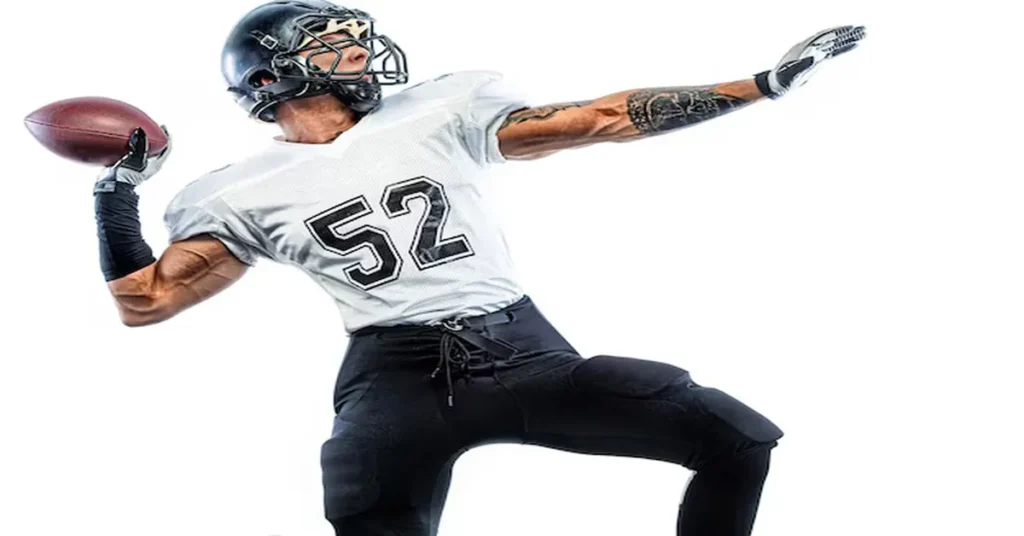In the high-octane world of American football, few positions are as electrifying and strategically crucial as the wide receiver. Known for their game-changing plays, unmatched agility, and ability to turn the tide of a match in a split second, wide receivers are among the most celebrated and scrutinized athletes on the gridiron. This article dives deep into the wide receiver position, exploring its history, required skill sets, legendary players, training methods, and future outlook. Whether you’re a budding football enthusiast or a seasoned sports analyst, this comprehensive guide will enrich your understanding of one of football’s most vital roles.
The Origins and Evolution of the Wide Receiver
Early Football and the Passing Game
The concept of the wide receiver began taking shape in the early 20th century when the forward pass became a legal and practical component of the game. Initially referred to as “ends” or “split ends,” these players lined up at the ends of the offensive line, primarily as blockers but occasionally venturing out to catch passes.
The Modern Era
As the passing game evolved, so did the role of the receiver. The West Coast offense, popularized in the 1980s by coaches like Bill Walsh, brought precise route-running and timing into sharp focus. This era gave birth to slot receivers and emphasized multiple wide receiver formations, further elevating the position’s importance.
The Wide Receiver’s Role on the Field
Primary Responsibilities
At its core, a wide receiver’s job is to:
- Run precise routes.
- Create separation from defenders.
- Catch passes thrown by the quarterback.
- Gain additional yards after the catch (YAC).
- Block defenders on running plays.
Offensive Formations and Routes
Wide receivers operate in various offensive formations, often labeled as X, Z, and slot positions. Each has a unique alignment and route responsibilities. A typical route tree includes slants, curls, fades, posts, corners, and go routes, each designed to exploit different defensive coverages.
Skill Sets and Attributes of Elite Wide Receivers
Physical Attributes
- Speed: Top-end speed allows receivers to outrun defenders.
- Agility: Quick cuts and changes in direction are vital for route-running.
- Hands: Reliable catching ability under pressure.
- Size and Strength: Useful for contested catches and breaking tackles.
Mental Attributes
- Football IQ: Understanding coverages and adjusting routes.
- Focus: Maintaining concentration through contact and distractions.
- Work Ethic: Commitment to training, film study, and continuous improvement.
Training and Development
High School to College
Aspiring wide receivers begin honing their skills in high school, often transitioning from track and field due to their speed and athleticism. At the collegiate level, competition intensifies, and athletes are exposed to complex playbooks and advanced training regimens.
Professional Level
NFL wide receivers undergo year-round training that includes:
- Strength and Conditioning
- Route Running Drills
- Hand-Eye Coordination Work
- Film Study
- Scrimmages and Live Drills
Iconic Wide Receivers in NFL History
Jerry Rice
Often regarded as the greatest wide receiver of all time, Rice holds numerous NFL records, including most career receptions, yards, and touchdowns.
Randy Moss
Known for his speed and ability to catch deep passes, Moss revolutionized the vertical threat role.
Larry Fitzgerald
A model of consistency and professionalism, Fitzgerald is celebrated for his precise route running and leadership.
Calvin Johnson (Megatron)
At 6’5″ with incredible speed, Johnson dominated defenders with his size and athleticism.
The Strategic Impact of Wide Receivers
Stretching the Field
Wide receivers force defenses to spread out, opening up running lanes and short passing opportunities.
Mismatches
Offensive coordinators often isolate receivers against weaker defenders, creating advantageous matchups.
Decoys
Even when not targeted, receivers can influence a play by drawing defenders away from the action.
Challenges and Injuries
Common Injuries
- Hamstring strains
- ACL tears
- Concussions
Recovery and Prevention
Strength training, flexibility work, and proper recovery protocols are essential to longevity in the position.
Future of the Wide Receiver Position
Evolving Schemes
With the rise of spread offenses and pass-heavy game plans, wide receivers are more critical than ever.
Technological Integration
Virtual reality, GPS tracking, and performance analytics are enhancing training and game preparation.
Global Reach
NFL academies and international leagues are cultivating talent worldwide, bringing new styles and approaches to the position.
Conclusion
The wide receiver is not just a glamorous position but a deeply strategic and physically demanding role that continues to evolve. From the early days of split ends to today’s precision athletes, the position has become a cornerstone of modern football. Mastery requires a blend of physical prowess, mental acuity, and relentless dedication. As offenses grow more complex and defenses adapt, the wide receiver will remain at the heart of football innovation.
FAQs
1. What is the difference between a slot receiver and an outside receiver?
A slot receiver lines up inside, closer to the offensive line, often running shorter, quicker routes, while outside receivers operate near the sidelines and run deeper or sideline routes.
2. Can wide receivers play on special teams?
Yes, especially younger players. Many wide receivers contribute as returners or gunners on kickoffs and punts.
3. What is a “YAC” and why is it important?
YAC stands for Yards After Catch, measuring a receiver’s ability to gain additional yards after securing a reception.
4. How do wide receivers communicate with quarterbacks?
They use hand signals, eye contact, and audible calls to adjust routes based on defensive alignment.
5. What’s the typical size of an NFL wide receiver?
Most NFL receivers range from 5’10” to 6’5″, with varying weights depending on their role and style of play.
6. How does weather affect wide receiver performance?
Rain or snow can impact traction and catching ability, requiring adjustments in footwear and gloves.







